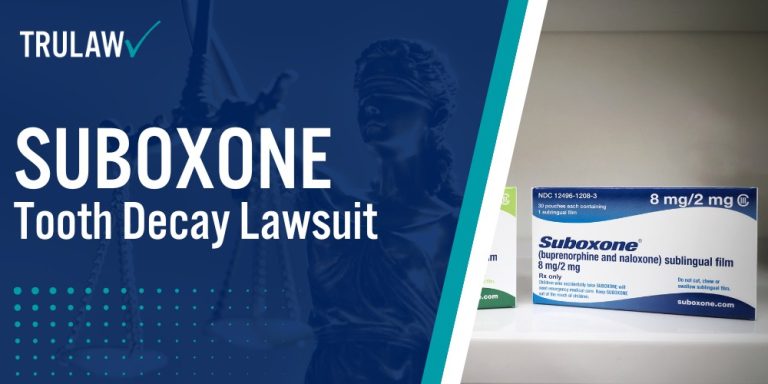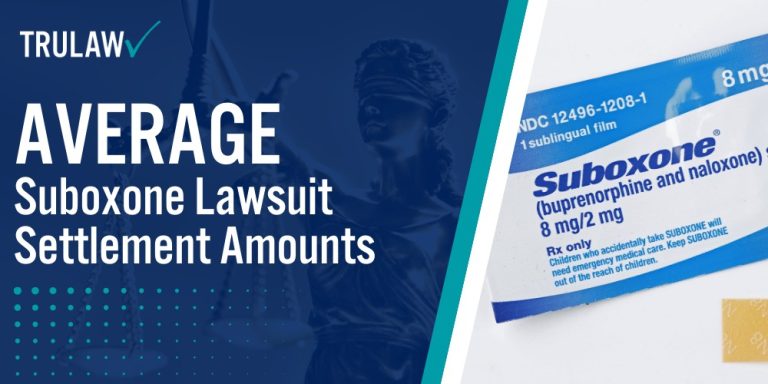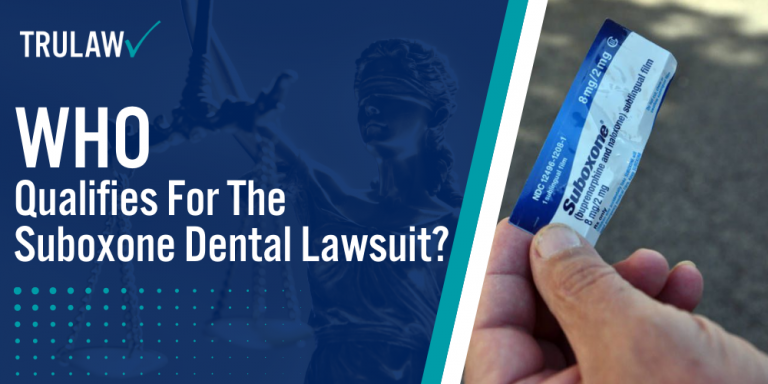Suboxone Film vs Tablet
- Last Updated: March 21st, 2025

Attorney Jessica Paluch-Hoerman, founder of TruLaw, has over 28 years of experience as a personal injury and mass tort attorney, and previously worked as an international tax attorney at Deloitte. Jessie collaborates with attorneys nationwide — enabling her to share reliable, up-to-date legal information with our readers.
Legally Reviewed
This article has been written and reviewed for legal accuracy and clarity by the team of writers and legal experts at TruLaw and is as accurate as possible. This content should not be taken as legal advice from an attorney. If you would like to learn more about our owner and experienced injury lawyer, Jessie Paluch, you can do so here.
Fact-Checked
TruLaw does everything possible to make sure the information in this article is up to date and accurate. If you need specific legal advice about your case, contact us by using the chat on the bottom of this page. This article should not be taken as advice from an attorney.
Key takeaways:
- Suboxone film and tablets contain the same active ingredients (buprenorphine and naloxone) but differ in delivery systems, absorption rates, and ease of use.
- The FDA has warned about potentially severe dental problems associated with long-term use of buprenorphine products dissolved in the mouth.
- TruLaw is actively investigating claims related to dental complications from Suboxone sublingual films and tablets, offering legal assistance to affected individuals who have experienced severe tooth decay, gum disease, or tooth loss while taking Suboxone.
Overview of Suboxone Film vs Tablet
On this page, we’ll provide an overview of Suboxone film vs tablets, safety and side effects of Suboxone use, regulatory and legal considerations in the Suboxone MDL, and much more.
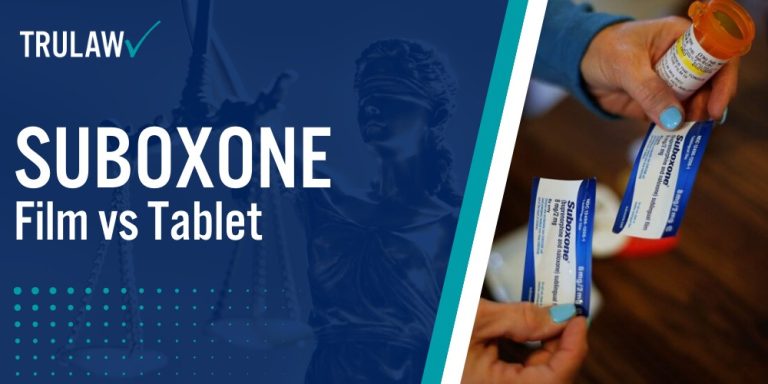
Intro to Suboxone Film vs Tablet
The key distinctions between Suboxone film and tablets include:
- Active Ingredients: Both contain buprenorphine and naloxone in the same ratios.
- Administration: Both are taken sublingually, but the film strips dissolve more quickly.
- User Experience: Patients may have preferences based on ease of use and taste.
- Safety: Both have similar side effect profiles, but recent FDA alerts have highlighted dental risks.
If you or someone you love has experienced dental issues while taking Suboxone, you may qualify to pursue compensation.
Contact TruLaw using the chat on this page to receive a free consultation and determine your eligibility to join others in filing for the Suboxone MDL today.
Table of Contents
Composition and Administration of Suboxone
Suboxone, a medication used to treat opioid use disorder (OUD), is available in two sublingual formulations: film and tablets.
While both forms contain the same active ingredients, buprenorphine and naloxone, they differ in their delivery systems, absorption rates, and other characteristics.
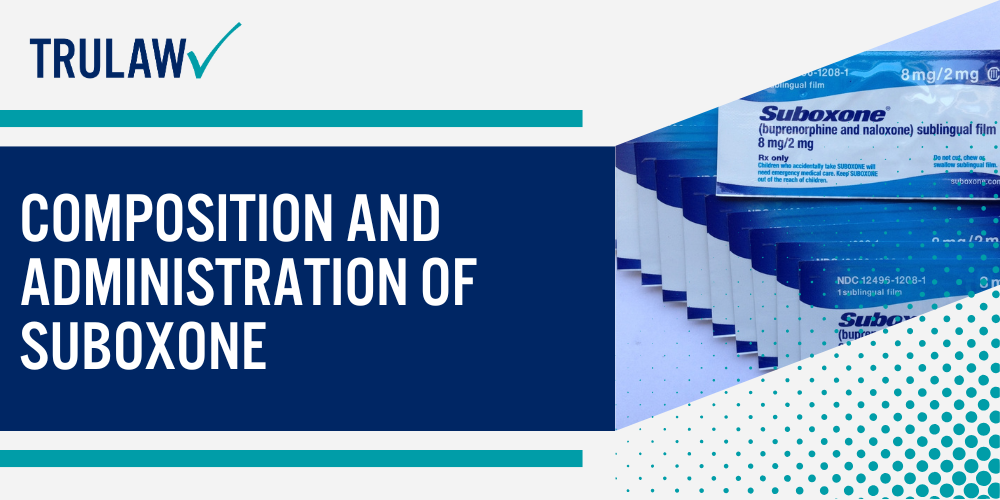
How a medication is formulated and administered can impact its efficacy, safety, and patient acceptability.
Understanding the similarities and differences between Suboxone film and tablets in terms of their composition and administration is essential for making informed treatment choices.
Active Ingredients in Suboxone Film vs Tablet
Suboxone contains two active ingredients: buprenorphine and naloxone.
Buprenorphine is a partial opioid agonist that binds to the mu-opioid receptor, helping to alleviate withdrawal symptoms and reduce opioid cravings in individuals with opioid use disorders.
Naloxone is an opioid antagonist that blocks the effects of opioids and lowers the risk of opioid overdose.
The combination of buprenorphine and naloxone in Suboxone helps prevent misuse and diversion.
Both the film strips and tablet formulations of Suboxone contain the same active ingredients in the same ratios (4:1 buprenorphine to naloxone).
Available strengths include:
- Buprenorphine/naloxone 2 mg/0.5 mg
- Buprenorphine/naloxone 4 mg/1 mg
- Buprenorphine/naloxone 8 mg/2 mg
- Buprenorphine/naloxone 12 mg/3 mg
Administration Methods for Suboxone Film and Tablet
Suboxone film and tablets are both administered sublingually (under the tongue).
The film strips are thin, dissolvable strips that adhere to the oral mucosa under the tongue.
Patients are instructed to keep the film in place until it fully dissolves, which typically takes 5-10 minutes.
The strips dissolve quickly and provide improved absorption compared to tablets.
Talking or swallowing during this time should be avoided to maximize absorption.
Suboxone tablets are small, round, and uncoated.
They are placed under the tongue and allowed to dissolve completely.
Like with the film, patients should avoid talking, swallowing, or otherwise disturbing the tablet as it dissolves to ensure optimal absorption.
Some patients find the pills taste unpleasant compared to the films.
Both Suboxone films and tablets have unique medication identification information printed on them to help with medication identification and prevent counterfeiting.
Efficacy and Absorption of Suboxone Forms
The effectiveness of a medication for treating opioid use disorders is determined not only by its active ingredients but also by how well it is absorbed into the body.
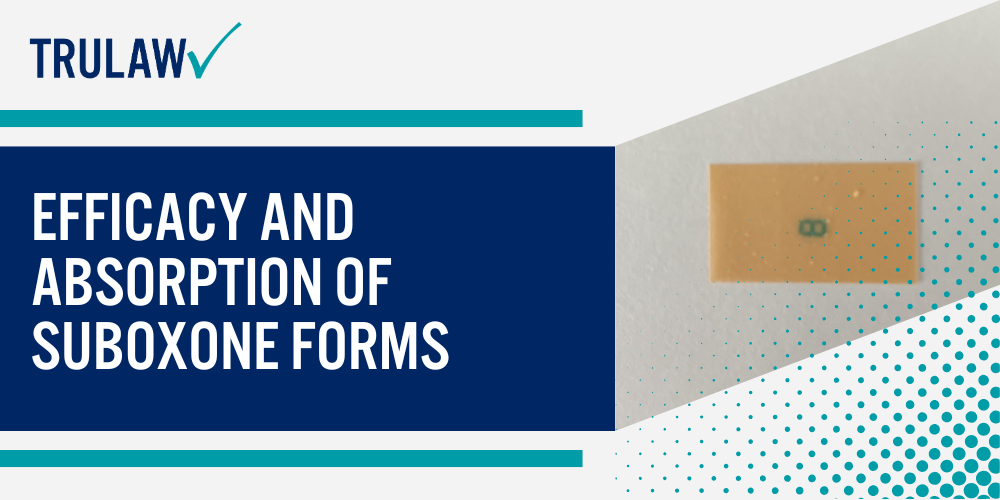
Comparing the absorption rates and clinical effectiveness of Suboxone film and tablets can help guide treatment decisions.
Absorption Rates of Suboxone Film vs Tablet
Studies have shown that Suboxone sublingual films have a higher bioavailability compared to the tablet formulation.
This means that a greater percentage of the active ingredients are absorbed into the bloodstream with the film strips.
The film’s unique delivery system allows it to adhere to the oral mucosa, potentially enhancing absorption and improving clinical effectiveness.
In a pharmacokinetic study, the average plasma concentrations of buprenorphine with the film were approximately 27% higher than those with the suboxone pills.
The time to peak concentration was also shorter with the film (1.5 hours vs.3 hours for the tablet).
Clinical Effectiveness of Suboxone Film Compared to Tablet
Despite differences in absorption, clinical trials have demonstrated that Suboxone film and tablets are equally effective in reducing opioid withdrawal symptoms and cravings.
Both formulations significantly decrease opioid use compared to placebo and provide withdrawal relief.
A study comparing treatment retention and opioid use between patients receiving Suboxone film or tablets found no significant differences in outcomes.
Rates of treatment success, defined as remaining in treatment and achieving abstinence from opioids, were similar between the film and tablet groups.
User Experience and Convenience
Patient preferences and ease of use are important considerations when selecting a medication formulation.
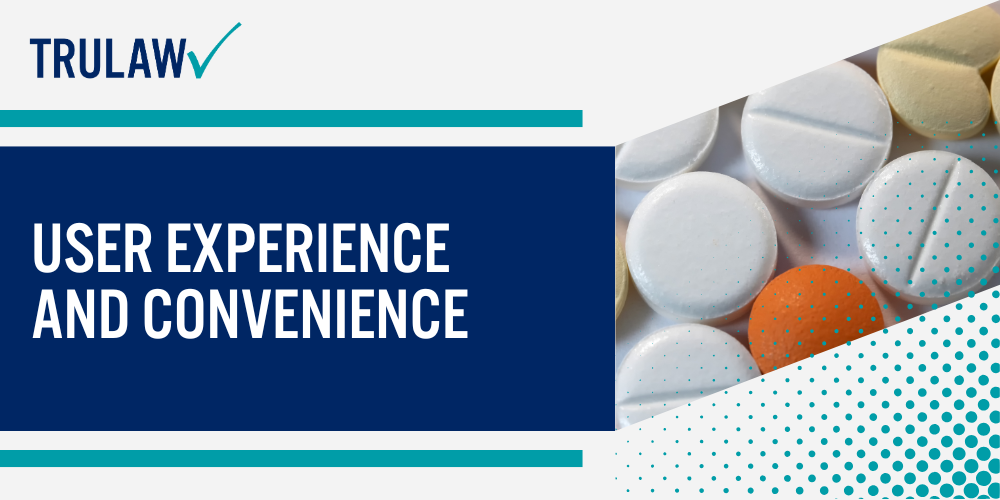
Comparing the convenience factors and patient experiences with Suboxone film strips and suboxone pills can inform shared decision-making between patients and providers.
Ease of Use: Suboxone Film vs Tablet
Suboxone sublingual films offer several advantages in terms of ease of use and convenience.
The thin, dissolvable strips are individually packaged in child-resistant foil pouches, making them portable and discreet.
Patients can carry a supply of film strips with them more easily than bottles of tablets.
The film strips also dissolve more quickly than tablets, which some patients may prefer.
In a survey, a majority of patients reported that the strips were easy to take and dissolve.
The taste of the film was rated as more pleasant compared to the pills.
Suboxone tablets, while small, maybe more cumbersome to transport and store compared to film strips.
Tablets also take longer to fully dissolve, which some patients find bothersome.
However, those who have difficulty with the texture or mouth feel of dissolvable films may prefer the pills.
Patient Preferences: Film or Tablet?
Patient preferences for Suboxone film vs tablets vary.
In one study, when given the choice between the two formulations, 80% of patients chose the film strips.
Reasons cited included better taste, faster dissolve time, and greater ease of use.
However, some patients do prefer tablets, often due to familiarity or issues with the film’s texture.
Cost and insurance coverage also play a role in patient preferences, as the branded film tends to be more expensive than generic buprenorphine/naloxone tablets.
Ultimately, patients can make the individual choice between Suboxone film and tablets in consultation with their healthcare provider.
Having both formulations available allows for greater treatment flexibility and patient-centered care.
Psychosocial support should be provided regardless of the formulation selected.
Safety and Side Effects
When evaluating medication options for treating opioid use disorders, safety is a top priority.
Understanding the side effect profiles and potential risks associated with Suboxone film and tablets is important to make an informed treatment decision.
Common Side Effects of Suboxone Film vs Tablet
The safety profiles of Suboxone film strips and tablets are generally comparable, with similar rates and types of adverse effects.
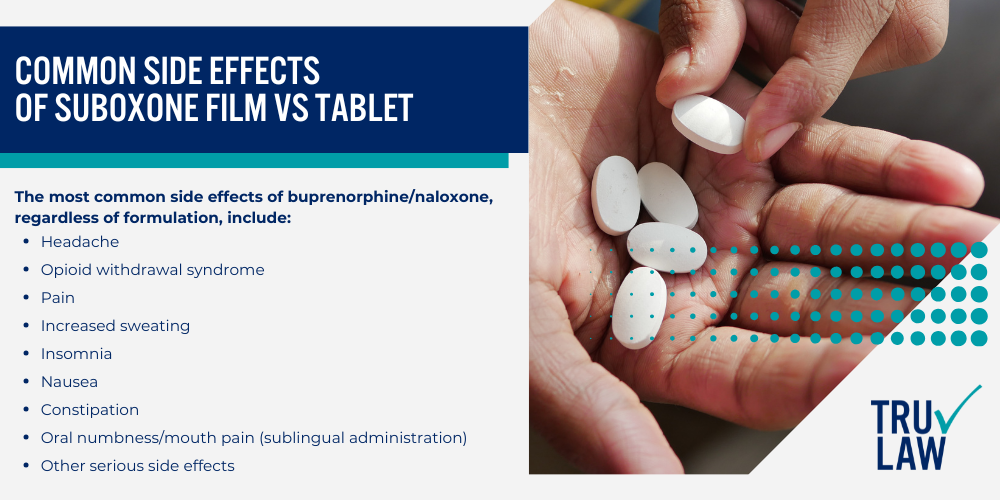
The most common side effects of buprenorphine/naloxone, regardless of formulation, include:
- Headache
- Opioid withdrawal syndrome
- Pain
- Increased sweating
- Insomnia
- Nausea
- Constipation
- Oral numbness/mouth pain (sublingual administration)
- Other serious side effects
However, recent FDA safety alerts have drawn attention to potentially severe dental problems associated with buprenorphine products dissolved in the mouth, including Suboxone strips and tablets.
Risks appear to be highest with long-term use.
Safety Profiles of Suboxone Forms
Overall, Suboxone film and tablets have demonstrated safety and tolerability in clinical trials and post-marketing studies.
Serious adverse events are rare with appropriate use.
The ceiling effect of buprenorphine limits respiratory depression and overdose risk compared to full opioid agonists.
As with any medication used for treating opioid use disorders, patients taking Suboxone should be monitored for adverse effects.
Those with a history of tooth decay, gum disease, or other oral health issues may require closer dental monitoring and preventive care to minimize risks.
Combining Suboxone with other CNS depressants, such as alcohol or benzodiazepines, increases the risk of dangerous side effects and overdose.
Patients should be counselled on these risks and the importance of taking Suboxone only as prescribed.
Cost and Accessibility
The financial burden and availability of medications used for treating opioid cravings can significantly impact patient access to treatment.

Evaluating the cost differences and insurance coverage for Suboxone film strips and tablets is essential for identifying potential barriers and facilitating cost-effective care.
Cost Comparison of Suboxone Film vs Tablet
Brand-name Suboxone sublingual films are generally more expensive than generic buprenorphine/naloxone tablets.
A 30-day supply of Suboxone film can cost over $500, while generic tablets may be available for $100-200 per month.
However, direct cost comparisons are complicated by differences in dosage strengths, insurance coverage, and pharmacy pricing.
Some insurers may prefer one formulation over the other based on cost or contracts with manufacturers.
Insurance Coverage and Availability
Most public and private insurance plans, including Medicaid and Medicare, cover buprenorphine/naloxone products for opioid use disorder treatment.
However, specific coverage for Suboxone film vs generic tablets varies by plan.
Some insurers may require prior authorization or have quantity limits.
Patients should check with their insurance provider regarding coverage and out-of-pocket costs for different buprenorphine/naloxone formulations.
The availability of Suboxone film strips and tablets may also differ at the pharmacy level.
Not all pharmacies stock both formulations.
Patients may need to check with multiple pharmacies or work with their healthcare provider to ensure access to their preferred product.
Regulatory and Legal Considerations
The regulatory landscape and legal issues surrounding medications used for treating opioid use disorders can evolve, impacting prescribing practices and patient rights.
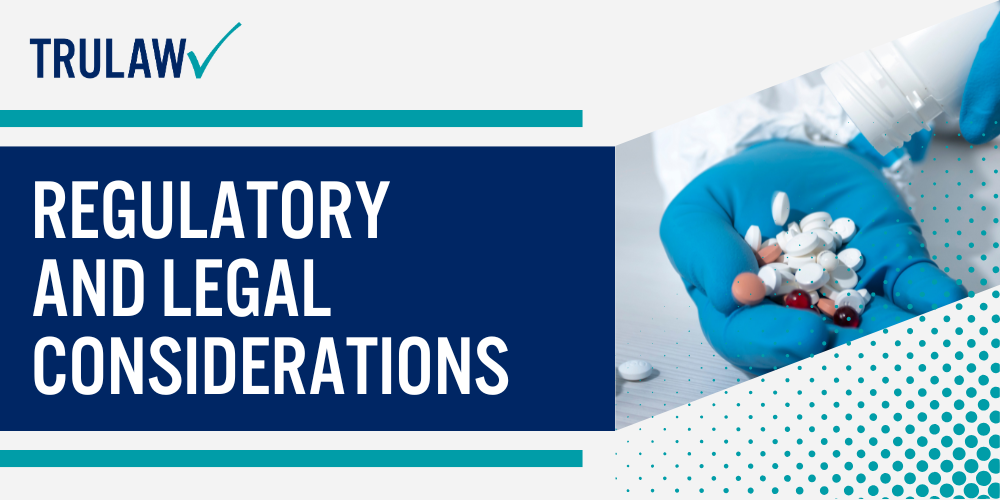
Healthcare providers and patients alike need to stay informed about FDA approvals, prescribing guidelines, and potential legal liabilities related to Suboxone film strips and tablets.
FDA Approvals for Suboxone Film and Tablet
Suboxone (buprenorphine/naloxone) sublingual tablets were first approved by the FDA in 2002 for the treatment of opioid dependence.
In 2010, the FDA approved Suboxone sublingual film, which offered an alternative delivery system to the tablets.
Generic versions of buprenorphine/naloxone sublingual tablets have been available since 2013 when the patent for brand-name Suboxone tablets expired.
However, the film strip formulation remains under patent protection, with no generic equivalents currently available in the US.
Legal Restrictions and Prescribing Guidelines
Under the Drug Addiction Treatment Act of 2000 (DATA 2000), qualified healthcare providers can prescribe buprenorphine products, including Suboxone, for opioid use disorder treatment in office-based settings.
Providers must obtain a special waiver and DEA identification number to prescribe these medications.
Prescribing guidelines for Suboxone film and tablets are similar, with the same dosage based on individual patient factors such as opioid dependence severity, withdrawal symptoms, and treatment response.
Typical maintenance doses range from 8 mg to 24 mg of buprenorphine per day, with higher doses rarely needed due to the ceiling effect.
Patients should be monitored for treatment compliance, diversion risk, and side effects.
Regular office visits, urine drug screening, and pill/film counts are recommended to ensure appropriate use and address any concerns.
TruLaw: Legal Assistance for Suboxone-Related Claims
As awareness grows about the potential dental risks associated with Suboxone use, patients who have experienced harm may seek legal recourse.
TruLaw is actively investigating claims related to dental complications from Suboxone sublingual films and tablets, offering legal assistance to affected individuals.
Potential Liability for Dental Side Effects
The recent FDA warning regarding dental problems with buprenorphine products dissolved in the mouth has raised concerns about potential liability for prescribers and manufacturers.
Patients who have experienced severe tooth decay, gum disease, or tooth loss while taking Suboxone film strips or tablets may seek legal recourse.
Healthcare providers should inform patients of the potential dental risks associated with sublingual buprenorphine use and encourage regular dental care to minimize complications.
Proper documentation of patient counselling and monitoring is essential to reduce legal liability.
Manufacturers of Suboxone film and tablets may also face lawsuits related to inadequate warnings or insufficient safety data regarding dental side effects.
Companies have a duty to properly study and disclose risks associated with their products.
Compensation for Suboxone-Induced Tooth Decay
Patients who have suffered dental harm due to Suboxone use may be entitled to compensation for their injuries, including medical expenses, lost wages, pain and suffering, and other damages.
However, proving causation between the medication and dental problems can be challenging.
Working with experienced attorneys who specialize in pharmaceutical liability and mass tort litigation can help patients navigate the legal process and maximize their chances of obtaining a successful outcome.
TruLaw is actively investigating potential claims related to dental complications from Suboxone use.
If you or a loved one has experienced severe tooth decay, gum disease, or tooth loss while taking Suboxone film strips or tablets, contact TruLaw today for a free case evaluation.
Our skilled legal team can review your situation, explain your rights, and fight for the justice you deserve.
Suboxone Lawsuit Frequently Asked Questions
-
Is there a Suboxone class action lawsuit?
No, there is not currently a Suboxone class action lawsuit for tooth decay.
Individual personal injury claims associated with dental issues from taking Suboxone are being consolidated into multi-district litigation (MDL) within the Northern District of Ohio.
-
What are the key differences between Suboxone film and tablets?
The key differences between Suboxone film and tablets include their delivery systems, absorption rates, and ease of use.
While both contain the same active ingredients (buprenorphine and naloxone), the film strips dissolve more quickly and may have higher bioavailability compared to the tablets.
-
Are Suboxone film and tablets equally effective in treating opioid use disorder?
Despite differences in absorption, clinical trials have demonstrated that Suboxone film and tablets are equally effective in reducing opioid withdrawal symptoms and cravings.
Both formulations significantly decrease opioid use compared to placebo and provide withdrawal relief.
-
What are the common side effects of Suboxone film and tablets?
The most common side effects of Suboxone film and tablets include headache, opioid withdrawal syndrome, pain, increased sweating, insomnia, nausea, constipation, and oral numbness/mouth pain.
Recent FDA safety alerts have drawn attention to potentially severe dental problems associated with the long-term use of buprenorphine products dissolved in the mouth.
-
How do the costs of Suboxone film and tablets compare?
Brand-name Suboxone sublingual films are generally more expensive than generic buprenorphine/naloxone tablets.
A 30-day supply of Suboxone film can cost over $500, while generic tablets may be available for $100-200 per month.
-
What legal assistance is available for individuals with dental issues from Suboxone use?
TruLaw is actively investigating claims related to dental complications from Suboxone sublingual films and tablets, offering legal assistance to affected individuals.
If you or a loved one has experienced severe tooth decay, gum disease, or tooth loss while taking Suboxone, contact TruLaw for a free case evaluation.

Managing Attorney & Owner
With over 25 years of legal experience, Jessica Paluch-Hoerman is an Illinois lawyer, a CPA, and a mother of three. She spent the first decade of her career working as an international tax attorney at Deloitte.
In 2009, Jessie co-founded her own law firm with her husband – which has scaled to over 30 employees since its conception.
In 2016, Jessie founded TruLaw, which allows her to collaborate with attorneys and legal experts across the United States on a daily basis. This hypervaluable network of experts is what enables her to share the most reliable, accurate, and up-to-date legal information with our readers!
You can learn more about the Suboxone Lawsuit by visiting any of our pages listed below:
Here, at TruLaw, we’re committed to helping victims get the justice they deserve.
Alongside our partner law firms, we have successfully collected over $3 Billion in verdicts and settlements on behalf of injured individuals.
Would you like our help?
At TruLaw, we fiercely combat corporations that endanger individuals’ well-being. If you’ve suffered injuries and believe these well-funded entities should be held accountable, we’re here for you.
With TruLaw, you gain access to successful and seasoned lawyers who maximize your chances of success. Our lawyers invest in you—they do not receive a dime until your lawsuit reaches a successful resolution!
AFFF Lawsuit claims are being filed against manufacturers of aqueous film-forming foam (AFFF), commonly used in firefighting.
Claims allege that companies such as 3M, DuPont, and Tyco Fire Products failed to adequately warn users about the potential dangers of AFFF exposure — including increased risks of various cancers and diseases.
Depo Provera Lawsuit claims are being filed by individuals who allege they developed meningioma (a type of brain tumor) after receiving Depo-Provera birth control injections.
A 2024 study found that women using Depo-Provera for at least 1 year are five times more likely to develop meningioma brain tumors compared to those not using the drug.
Suboxone Tooth Decay Lawsuit claims are being filed against Indivior, the manufacturer of Suboxone, a medication used to treat opioid addiction.
Claims allege that Indivior failed to adequately warn users about the potential dangers of severe tooth decay and dental injuries associated with Suboxone’s sublingual film version.
Social Media Harm Lawsuits are being filed against social media companies for allegedly causing mental health issues in children and teens.
Claims allege that companies like Meta, Google, ByteDance, and Snap designed addictive platforms that led to anxiety, depression, and other mental health issues without adequately warning users or parents.
Transvaginal Mesh Lawsuits are being filed against manufacturers of transvaginal mesh products used to treat pelvic organ prolapse (POP) and stress urinary incontinence (SUI).
Claims allege that companies like Ethicon, C.R. Bard, and Boston Scientific failed to adequately warn about potential dangers — including erosion, pain, and infection.
Bair Hugger Warming Blanket Lawsuits involve claims against 3M — alleging their surgical warming blankets caused severe infections and complications (particularly in hip and knee replacement surgeries).
Plaintiffs claim 3M failed to warn about potential risks — despite knowing about increased risk of deep joint infections since 2011.
Baby Formula NEC Lawsuit claims are being filed against manufacturers of cow’s milk-based baby formula products.
Claims allege that companies like Abbott Laboratories (Similac) and Mead Johnson & Company (Enfamil) failed to warn about the increased risk of necrotizing enterocolitis (NEC) in premature infants.
Here, at TruLaw, we’re committed to helping victims get the justice they deserve.
Alongside our partner law firms, we have successfully collected over $3 Billion in verdicts and settlements on behalf of injured individuals.
Would you like our help?
